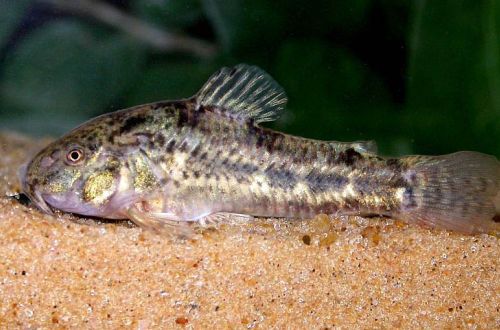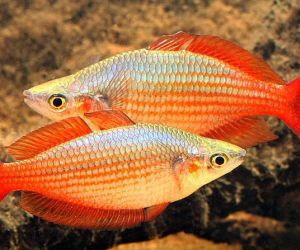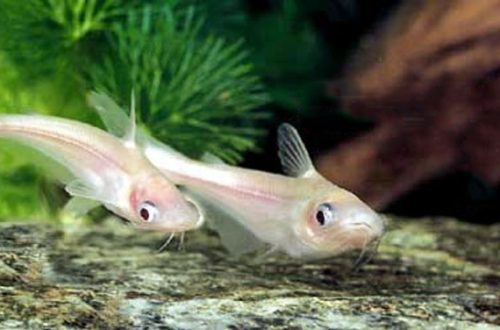
Vinciguerrae schist
Schistura Vinciguerrae, scientific name Schistura vinciguerrae, belongs to the Nemacheilidae family. Named in honor of the zoologist Decio Vinciguerra, who made a great contribution to the study of Burmese fish species. Often found in hobby aquariums compared to other chars. It is easy to keep, gets along with non-aggressive species of similar size, has a beautiful color.

Contents
Habitat
It comes from Southeast Asia from the territory of the northern provinces of Myanmar (formerly Burma) and the eastern states of India, Manipur and Nagaland, bordering them. It inhabits the upper basin of the Salween River, which originates in the upper reaches of the mountains. The fish is found in regions with a strong, sometimes violent current with numerous rapids and cascades. Substrates are stony with rock fragments. Aquatic vegetation grows mainly along the banks. Flow rates and turbidity vary seasonally.
Brief information:
- The volume of the aquarium – from 80 liters.
- Temperature – 20-26°C
- Value pH — 6.0–7.5
- Water hardness – soft to medium hard (2-12 dGH)
- Substrate type — stony
- Lighting – subdued or moderate
- Brackish water – no
- Water movement – moderate or strong
- The size of the fish is 6–7 cm.
- Food – any sinking food
- Temperament – peaceful
- Content alone or in a group
Description
Adults reach a length of 6–7 cm. The fish has an elongated cylindrical body. The fins are short, the ventral and pectoral fins are located low, closer to the abdomen. The coloration is yellow-brown with rows of vertical dark stripes-strokes, which noticeably thicken towards the tail. The latter is painted red with a pattern of black dots. Sexual dimorphism is weakly expressed, there are no obvious visible differences between male and female.
Food
In the wild, they feed on small invertebrates: worms, larvae, aquatic insects, crustaceans, etc. In a home aquarium, most popular foods will be accepted in dry, frozen and live form. At the same time, you should not worry that the stream will spread the food throughout the tank, the fish are perfectly adapted to snatch food from the stream.
Maintenance and care, arrangement of the aquarium
The optimal size of the aquarium for a small group of fish starts from 80 liters. Maintenance will not cause much difficulty if the right conditions are provided – this is clean running water, rich in dissolved oxygen, and the presence of a moderate or even strong current. A system of internal filters combined with an aerator can cope with these tasks. Maintaining high water quality will also depend on the regularity (once a week) of its replacement by 30-50% of the volume and the removal of organic waste (feed residues, excrement).
The decor is simple. It is enough to fill the bottom with stones, coarse sand, add a few large boulders and snags. If desired, you can place artificial vegetation, or use live plants of unpretentious varieties that can grow in strong currents. For example, anubias, bucephalandra, krinum, some aquatic mosses and ferns.
Behavior and Compatibility
It is considered not the most sociable species, but unlike many other charrs, it does not show aggression towards relatives and can be in a group with them. Peacefully tuned to other fish. However, due to the specifics of the habitat (the same current), the choice of possible neighbors in the aquarium is very limited.
Breeding / breeding
At the time of writing this article, the authors have not been able to find reliable information about the successful breeding of Chistur Vinciguerrae in home aquaria.
Fish diseases
Health problems arise only in case of injuries or when kept in unsuitable conditions, which depresses the immune system and, as a result, provokes the occurrence of any disease. In the event of the appearance of the first symptoms, first of all, it is necessary to check the water for the excess of certain indicators or the presence of dangerous concentrations of toxic substances (nitrites, nitrates, ammonium, etc.). If deviations are found, bring all values back to normal and only then proceed with treatment. Read more about symptoms and treatments in the Aquarium Fish Diseases section.





